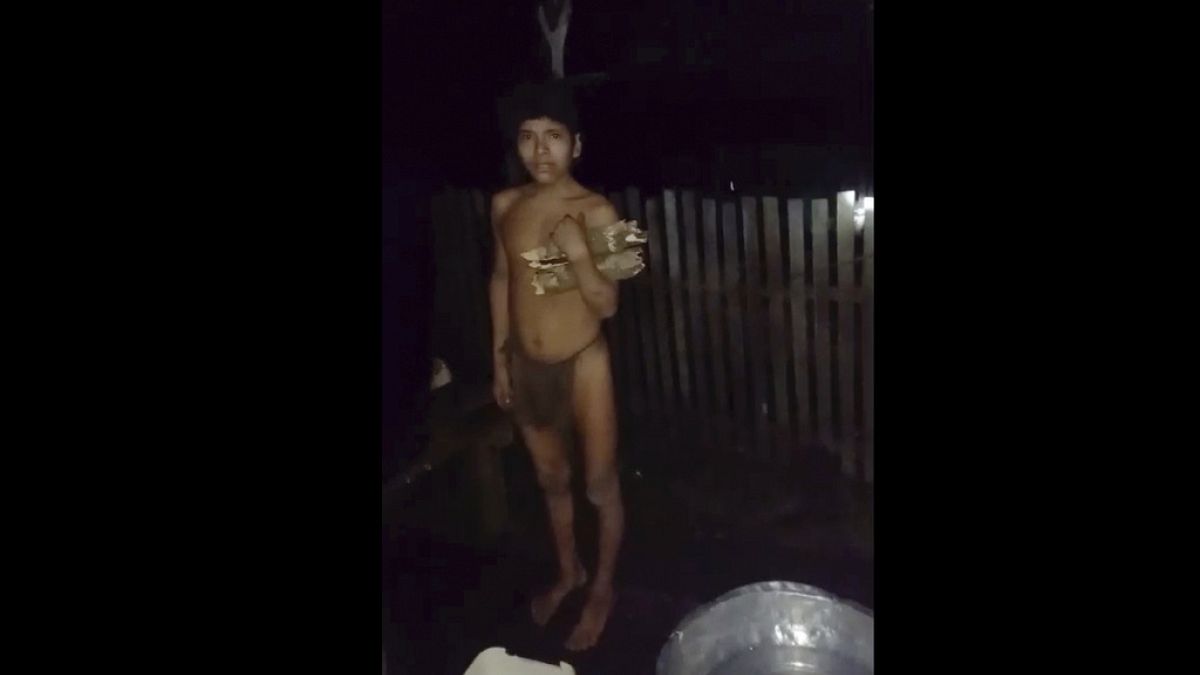Europe
Indigenous man from Amazon tribe makes contact with outside world

Introduction to Isolated Indigenous Tribes
Deep within the Amazon rainforest, there exist numerous isolated Indigenous tribes that have had little to no contact with the modern world. These groups have chosen to remain in isolation, preserving their traditional way of life and cultural practices. Brazil is home to many such tribes, with estimates suggesting that there are dozens of isolated groups living in the vast expanse of the Amazon. The Brazilian government, through its Indigenous affairs agency, Funai, has a policy of protecting these groups by establishing monitored and protected areas where they can live undisturbed. The recent encounter of a young man from one of these tribes with a riverine community in the Amazon highlights the delicate balance between preserving their isolation and the challenges of ensuring their safety and well-being.
The Encounter in Bela Rosa
The encounter occurred in the community of Bela Rosa, located along the Purus River in the southwestern Amazon. The young man, reportedly from an isolated Indigenous tribe, approached the community around 7 p.m. local time on Wednesday. Footage obtained by The Associated Press shows him barefoot and wearing a small loincloth, appearing calm and in good health as he carried two logs. Locals believed the man was seeking fire, as he seemed to be asking for assistance with starting a fire. A smartphone video captured the moment when one resident attempted to show him how to use a lighter, though the man seemed unfamiliar with the device. This encounter underscores the vast cultural and technological divide between these isolated tribes and the modern world.
Funai’s Involvement and the Young Man’s Return
Following the encounter, officials from Funai arrived in Bela Rosa and took the young man to a nearby facility. Funai released a statement on Friday indicating that the young man had returned to his forest home voluntarily less than 24 hours after the encounter. A team of health professionals was dispatched to assess whether the young man had been exposed to any diseases to which isolated Indigenous tribes have no immunity. This is a critical step, as isolated tribes are highly vulnerable to diseases such as influenza, measles, and malaria, to which they have not developed immunity. Funai also established surveillance in the area to prevent unauthorized individuals from reaching the location of the isolated tribe, ensuring their continued safety and isolation.
Cultural Exchange and Mutual Learning
The brief interaction between the young man and the residents of Bela Rosa offers a rare glimpse into the lives of isolated Indigenous tribes. The young man’s calm demeanor and apparent curiosity about the lighter suggest a desire to learn, even if only temporarily. Similarly, the residents of Bela Rosa were likely fascinated by the encounter, offering a moment of mutual learning and cultural exchange. However, such interactions are rare and often fraught with challenges, as they can expose isolated tribes to risks such as disease transmission and cultural disruption. Funai’s approach of minimizing contact while providing necessary medical assessments and protection reflects the delicate balance required in managing such situations.
Policy and Protection of Isolated Tribes
Brazil’s policy of not actively seeking contact with isolated Indigenous tribes is rooted in a deep respect for their autonomy and a recognition of the potential risks associated with contact. Instead, the government focuses on establishing protected and monitored areas, such as Mamoriá Grande, near where the encounter occurred. These areas are designed to safeguard the tribes’ way of life while also preventing unauthorized incursions that could threaten their safety. Funai’s response to the encounter in Bela Rosa exemplifies this approach, prioritizing the young man’s health and safety while respecting his decision to return to his people. This policy is not without its challenges, as balancing protection with the need to ensure the well-being of these tribes requires careful planning and resources.
Conclusion and Reflections
The encounter in Bela Rosa serves as a poignant reminder of the existence and resilience of isolated Indigenous tribes in the Amazon. The young man’s brief interaction with the modern world and his voluntary return to his forest home highlight the complexities of managing these interactions. Funai’s response demonstrates a commitment to protecting these tribes while respecting their autonomy, a approach that is both necessary and laudable. As the world continues to encroach on the Amazon, the preservation of these isolated tribes’ way of life remains a critical challenge. The story of the young man from Bela Rosa offers a rare glimpse into this important issue, prompting reflections on the importance of cultural preservation and the need for thoughtful policies to ensure the survival of these unique communities.